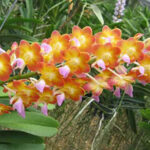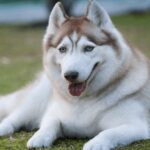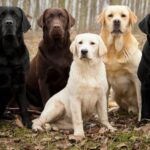If you’re a dog lover, you’ve probably heard of the infamous Hmong Bobtail dog, right? Renowned for their intelligence and bravery, these dogs are indispensable companions to the Hmong people and are exceptional hunting dogs. Let’s delve into some of the remarkable attributes that make this breed stand out.
1 Origin of the Hmong Bobtail Dog
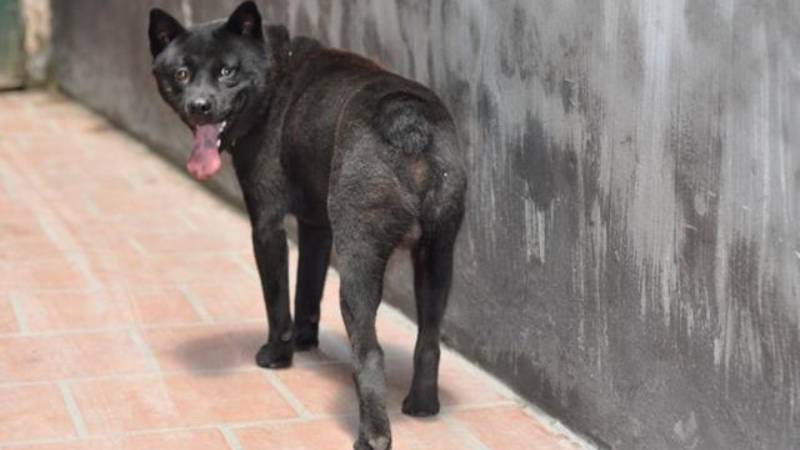
The Hmong Bobtail dog, also known as the Hmong Bobtail, is a loyal companion and a source of pride for the people of Northwest Vietnam. Traditionally, these dogs were used for guarding homes and properties, but nowadays, they are trained for hunting due to their bravery and loyalty.
Moreover, the Hmong Bobtail has proven to be an invaluable asset to the police force in crime prevention. Thus, it is undoubtedly one of the four great national dogs of Vietnam.
2 Characteristics of the Hmong Bobtail Dog
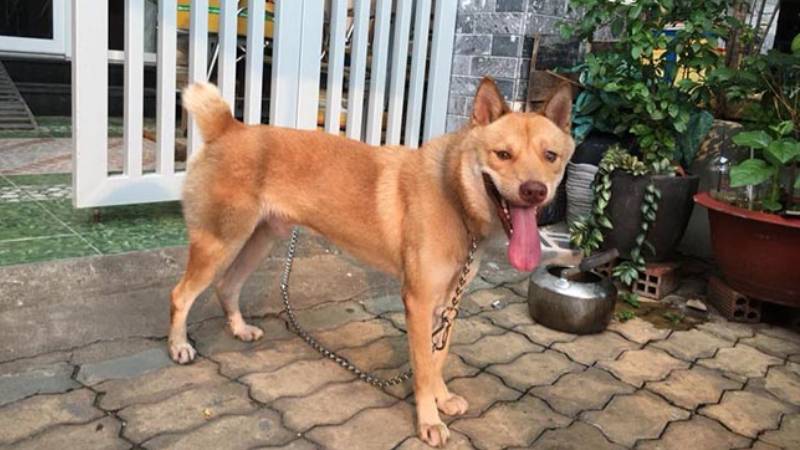
Given their mountain forest habitat and hunting prowess, the Hmong Bobtail resembles a wolf in appearance, with a sturdy and muscular build. Adult dogs typically measure between 45-55cm in length and weigh anywhere from 15 to 25 kilograms. Their robust physique makes them exceptional hunters and guardians.
The back of a Hmong Bobtail is straight, broad, and long, with a distinctive indentation along the spine. Well-developed musculature enables them to navigate mountainous terrain, dense forests, and treacherous landscapes with ease.
The Hmong Bobtail boasts a large head and skull, contributing to their superior memory and intelligence. When alert, their forehead wrinkles, but otherwise, it remains smooth.
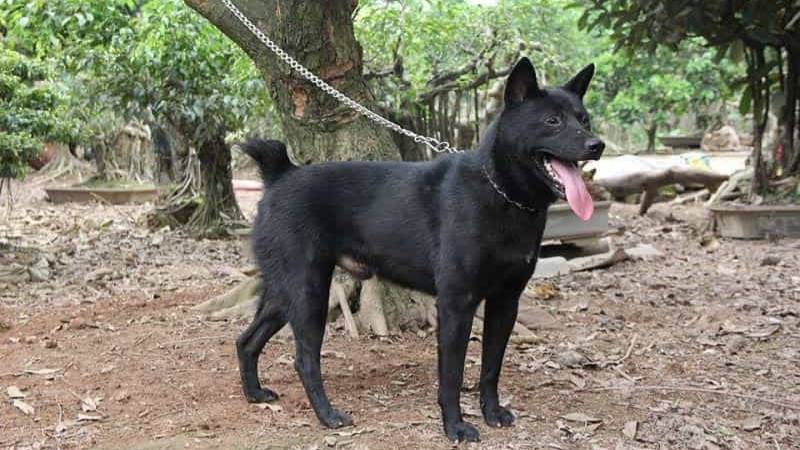
A shorter muzzle indicates higher purity and obedience. Their teeth are sharp, their sense of smell is acute, and their ears are always pricked, ready to detect the slightest movement of their prey.
Hmong Bobtails are adapted to withstand harsh weather conditions, thanks to their thick coats. Their fur is usually black, brindled, or brown, and interestingly, their eye color always matches their coat color! Despite their robust build, they have an adorable stubby tail, which is often absent or measures only 3-5 centimeters in length!
3 Classification of the Hmong Bobtail Dog
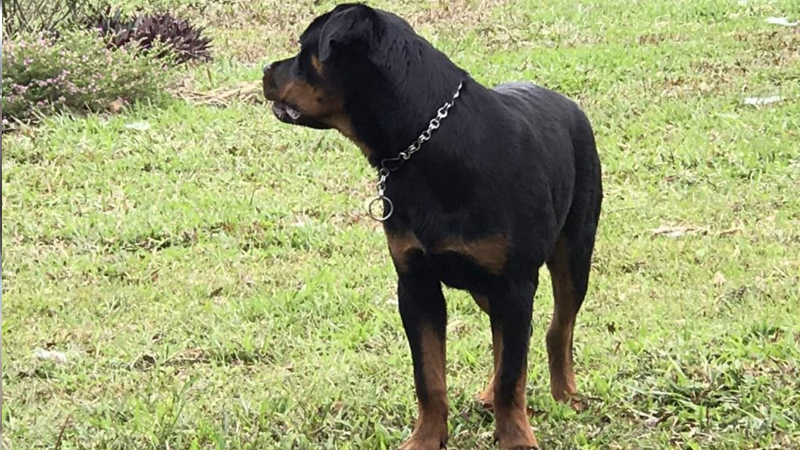
There are three types of Hmong Bobtail dogs, primarily distinguished by the length of their tails.
- Bobtail: This type has almost no tail, making it easily recognizable from other dog breeds.
- Bobtail Hare: Named for its resemblance to a hare’s tail, measuring approximately 3-5 centimeters.
- Bobtail Stump: This variety has the longest tail, ranging from 8-15 centimeters.
Among these three types, the Bobtail and Bobtail Hare are considered more valuable. The shorter the tail, the higher the dog is esteemed.
4 Temperament of the Hmong Bobtail Dog
The Hmong Bobtail is a dog with a strong sense of territorial protection. They will bark loudly at strangers and carefully observe their movements.
Loyalty is a defining trait of the Hmong Bobtail, as they devote themselves to a single owner and only accept food from that person. They will bravely defend their owner in dangerous situations.
Additionally, these dogs possess an extraordinary memory and can quickly learn training commands.
5 How to Care for a Hmong Bobtail Dog
Diet and Nutrition for Hmong Bobtail Dogs
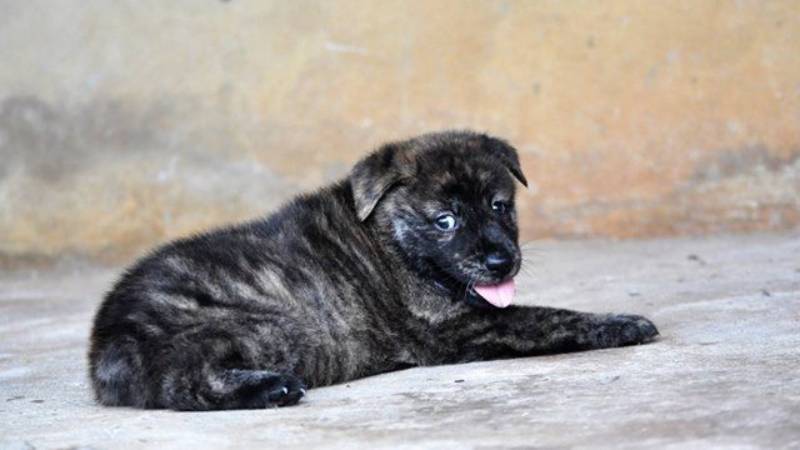
It is crucial to provide a well-balanced diet that is appropriate for the dog’s age. When they are young, it is best to feed them cooked food to avoid overburdening their digestive system. As they mature, they can transition to raw food, and a meat-rich, low-vegetable diet will help maintain their muscular build.
It is recommended to regularly deworm puppies during the first six months of their life to ensure optimal nutrient absorption.
Grooming for Hmong Bobtail Dogs
To maintain hygiene, it is advisable to bathe your Hmong Bobtail dog once a week to prevent bacterial infections. After bathing, make sure to dry them thoroughly or use a hairdryer to avoid them rolling in sand to dry off. In winter, a quick towel dry after a bath will help prevent respiratory issues.
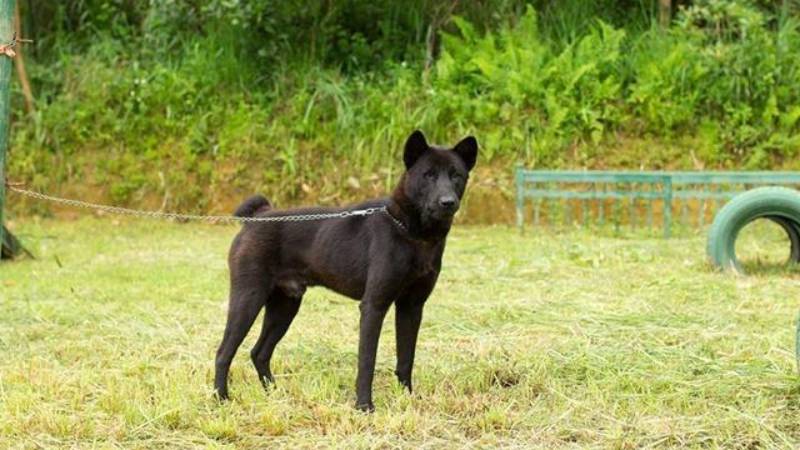
Health Concerns for Hmong Bobtail Dogs
Hmong Bobtail dogs are generally robust and rarely fall ill, and even if they do, they recover quickly. Common health issues include skin and lung infections and parasitic infestations.
Training Hmong Bobtail Dogs
You can use food as a reward to train your dog to sit, stand, or follow other commands. When giving instructions, maintain eye contact, and offer a piece of dry food as a reward for obeying.
For walking training, start with short distances, rewarding your dog after every 10 steps. If they struggle to understand a command, be persistent and repeat it several times. They will eventually get it!
6 How Much Do Hmong Bobtail Dogs Cost?
Purebred Hmong Bobtail puppies typically range in price from 2 million to 8 million VND per puppy.
On the other hand, mixed-breed puppies are significantly more affordable, costing between 500 thousand and 2 million VND.
7 How to Identify a Purebred Hmong Bobtail Dog
To recognize a purebred Hmong Bobtail dog, keep an eye out for these distinctive features:
- Short tail and muzzle
- Small, erect ears
- Smooth, solid-colored coat without curls
- Well-proportioned and compact body
- 42 teeth, including 8-edged canines
Be sure to check out our selection of high-quality, affordable products for your furry friend!
In conclusion, the Hmong Bobtail dog is an intelligent and courageous breed. We hope this article has provided you with valuable insights into these remarkable canines.
The Ultimate Guide to Raising a Healthy and Happy Dog: A-Z Tips for Puppy Care and Wellbeing
When it comes to raising a healthy and happy dog, it’s natural to want to avoid those niggling health issues that can impact your furry friend’s well-being. Join us as we explore an A-Z guide to dog care, with expert tips to promote your pup’s growth and overall health. Let’s ensure your beloved canine companion thrives!
The Magic of Scented Orchids: A Guide to Cultivating and Caring for These Fragrant Flowers
“Orchid Dendrobium is a stunning and vibrant orchid species with an extensive range of colors. In this article, we will delve into the fascinating world of this exquisite plant and explore its beauty and unique characteristics. Join us on this journey as we uncover the secrets of the enchanting Dendrobium orchid.”
The 7 Most Beautiful Dog Breeds in the World: A Canine Connoisseur’s Guide
Introducing your new best friend: Man’s loyal companion, the dog. Not only are they our trusted guardians, but they also provide us with invaluable emotional support, helping to ease our worries and anxieties. If you’re considering welcoming a furry friend into your life but are unsure of which breed to choose, then look no further! This article will guide you through the process, ensuring you find the perfect canine companion to suit your unique needs and lifestyle.
The Ultimate Guide to Labrador Retrievers: History, Characteristics, Care, and Pricing
The Labrador Retriever, or ‘Lab’ as they are affectionately known, is a beloved breed of dog renowned for their friendly, devoted, and hardworking nature. With a reputation for being gentle and amiable, Labs have become a popular choice for those seeking a loyal four-legged companion. If you’re considering welcoming a Lab into your home, join us as we delve into the origins, unique characteristics, and care requirements of this wonderful breed.


























